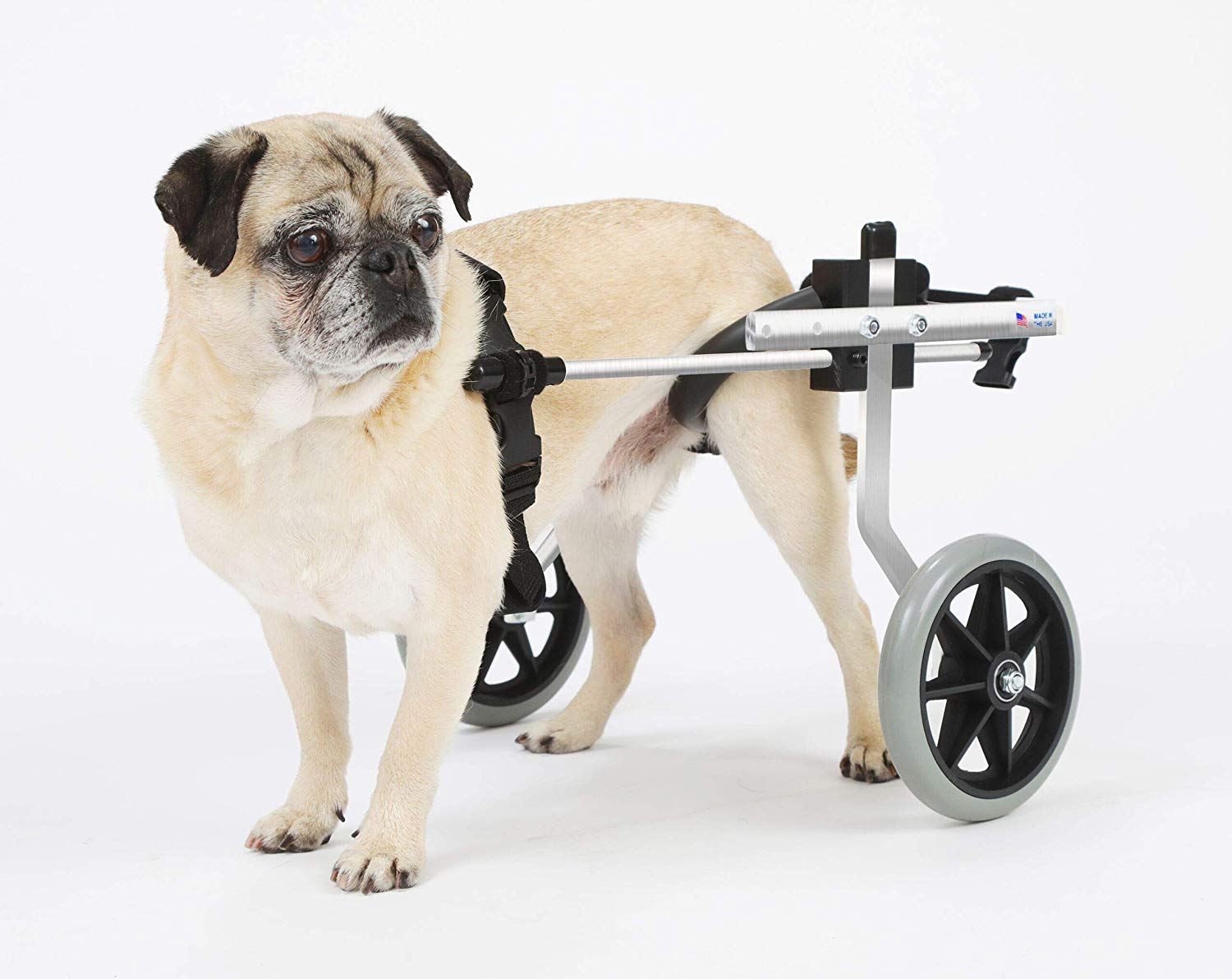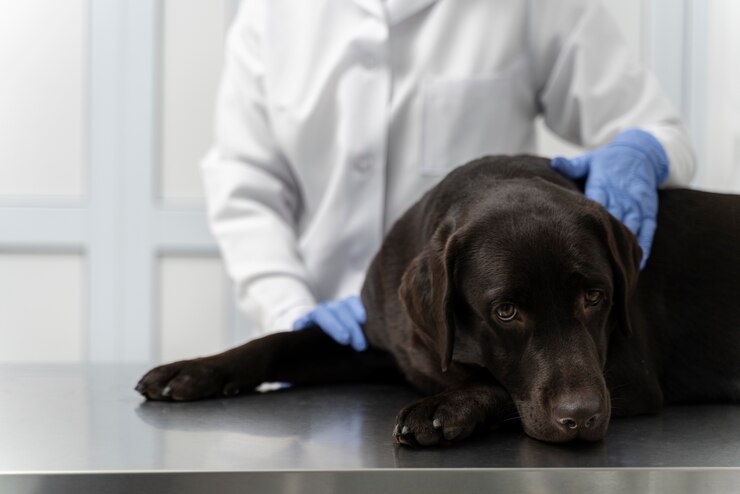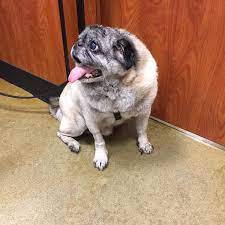Dog
Find the appropriate size crate with our guide to dog crates.

Determining the correct crate size for your dog can be tricky. It’s critical to choose the proper crate size because doing so could undermine the success of your pup’s crate training and jeopardise his general wellbeing.
You must be aware of your dog’s main breed traits, present and adult size, and unique behaviour and personality in order to do this.
It can be difficult to choose the ideal dog cage size when you’re first looking for one.
How long will you keep your dog in a crate?
The first thing you should decide before purchasing a crate is whether you want to utilise it for the most of your dog’s life or just while they are puppies (to aid with housebreaking). Your desired crate size will be influenced by the response to this question.
Many dog owners keep using a box throughout their dog’s life for a variety of reasons, including Give their dog a calming, comfortable space. Avoid issues and trouble that may arise if a dog is left unsupervised at home. Make excursions, such as trips to the vet or groomer, stress-free
You need a crate that will fit your puppy for the first two to three months of its life if you just intend to use it when your dog is a puppy.
Be aware of your dog’s present size.
Ask your breeder or canine expert about your puppy’s weight, height, and parents’ sizes if you haven’t already received your puppy. As stated above, find out how much they anticipate your puppy will grow during the first two to three months if you’re solely crate training it while it’s a puppy. If you don’t have access to a dog expert, you can look up your dog’s breed online to get an idea of how big a puppy it will be.
If you already own a puppy, you can weigh and measure it yourself or take it to a veterinarian or trainer.
Advice on how to gauge your dog’s height:
Put your dog up straight and in front of a door or wall. The result will be a fixed position. Measure from your dog’s paws to the top of his or her head with a measuring tape or piece of string to determine the height of your dog’s head. Remember that the height of your dog’s head must also be taken into consideration because the majority of height measurements (particularly on the web) are taken to the “withers” of a dog.
Measure your dog’s length from the end of his or her tail to the tip of their snout. 2-4 inches should be added to this measurement (ensuring additional room).
Since inches are the most widely used metric for dog cage sizes, make sure to measure in them.
Make sure to allow for the additional height of the dog crate pad or bed if you choose to use one. For instance, increase your dog’s height by 1-2″ if you intend to use our tiny Snooz pad with the small Revol.
Advice for weighing your dog
- You can just use a standard scale.
- You can weigh yourself and your dog simultaneously, and then take the difference.
- Please take note that your dog might not want to stay on the scale in either situation, so you might only have a few seconds to weigh him or her.
Other dimensions and feature considerations
Length varies and needs to be considered. Basset Hounds, Dachshunds, and Pembroke Welsh Corgis, for instance, are longer than other canines of comparable weight and height.
There must be room for short legs. Some puppies, such as Corgis, may struggle with crates that have more of a lip or step because of their tiny legs. This is typically resolved by placing a tiny step-like object, like a book, in front of the crate entry. Males often have a bigger average body size than females.
Know your dog’s size at maturity. Knowing your dog’s breed traits, particularly adult height and weight, is crucial if you intend to crate-train it.
Dog
Wheelchairs for Dogs Enhancing Mobility and Quality of Life

For many pet owners, dogs are more than just animals they’re cherished companions who bring immense joy and companionship. Unfortunately, some dogs experience mobility challenges due to injuries, illnesses, or congenital conditions that affect their ability to walk or run. Fortunately, technological advancements and innovative solutions have paved the way for the creation of specialized wheelchairs designed specifically for dogs. These devices play a crucial role in improving the mobility and overall quality of life for these beloved pets.
Understanding the Need for Dog Wheelchairs
Dogs can encounter mobility issues due to various reasons, including spinal injuries, degenerative diseases, neurological disorders, and limb amputations. Such conditions can severely limit a dog’s movement and impact their independence. Wheelchairs for dogs provide essential support by assisting in weight-bearing, enabling them to move freely, exercise, and engage in regular activities without excessive strain or discomfort.
Design and Functionality of Dog Wheelchairs
Dog wheelchairs are custom-built devices tailored to fit the unique anatomy and size of different dog breed. These wheelchairs typically consist of a frame, wheels, straps or harnesses, and padding for comfort. The design varies based on the dog’s needs rear support for hind limb weakness, front support for forelimb disabilities, or full-body support for dogs with more complex conditions.
Most wheelchairs are adjustable, allowing for modifications as the dog’s condition progresses or changes. They’re lightweight and crafted from durable materials to ensure ease of movement and durability. Some models even come with accessories such as all-terrain wheels for outdoor adventures or additional support for stability.
Benefits of Using Wheelchairs for Dogs
The advantages of dog wheelchairs are manifold. Primarily, these devices restore mobility and independence, enabling dogs to move around freely, exercise, and participate in activities they previously enjoyed. Enhanced mobility helps prevent muscle atrophy, maintains joint flexibility, and contributes to better overall health.
Additionally, wheelchairs can improve a dog’s mental well-being by reducing frustration and anxiety associated with limited movement. It fosters a sense of normalcy and allows them to remain an active part of their family’s life. Moreover, dog wheelchairs can alleviate the burden on pet owners, making it easier to care for their disabled pets and reducing the risk of caretaker burnout.
Adoption and Adaptation to Dog Wheelchairs
Introducing a dog to a wheelchair requires patience and positive reinforcement. Initially, some dogs may be hesitant or uncomfortable with the device. Training and gradual introduction play a crucial role in helping them adapt. Encouraging them with treats, short sessions, and gentle guidance can help dogs become accustomed to the wheelchair.
It’s essential to monitor the dog’s comfort and make necessary adjustments to ensure the wheelchair fits properly without causing any discomfort or chafing. Regular checks and proper maintenance are vital to ensure the wheelchair remains functional and comfortable for the dog.
Impact on the Pet-Owner Relationship
The use of wheelchairs can deepen the bond between pets and their owners. Owners often witness their dog’s determination and resilience, strengthening their emotional connection. Furthermore, the satisfaction derived from witnessing their pet’s improved quality of life reinforces the sense of companionship and care.
Conclusion
Wheelchairs for dogs are invaluable tools that significantly improve the lives of disabled or mobility-impaired pets. These devices not only restore freedom of movement but also contribute to the overall well-being and happiness of the dog. The advancements in veterinary medicine and technology continue to drive innovation in creating more tailored and effective solutions, providing hope and support for dogs and their loving owners.
Through these wheelchairs, dogs can continue to enjoy a fulfilling life, filled with love, play, and companionship, reaffirming the timeless bond between humans and their furry companions.
Dog
Understanding Dog Constipation

Dogs are cherished friends that are renowned for their lively nature and unwavering devotion. But just like people, dogs can have health problems, and constipation is a typical ailment that they face. It’s critical for responsible pet owners to be aware of the warning symptoms, comprehend the underlying causes, and understand how to treat and avoid constipation in dogs.
What Is Constipation in Dogs?
Constipation in dogs is the inability to easily pass stool due to irregular or difficult bowel motions. Dogs typically urinate once or more times a day, according to their age, diet, and general health. Constipation in dogs results in firm, dry stools that are difficult to pass, which can be uncomfortable and possibly lead to health issues.
Dog constipation causes:
Dog constipation can be caused by a number of things, such as:
- Dietary Problems: Constipation may result from abrupt dietary changes or inadequate fiber consumption. Low-fiber diets might cause firmer, more difficult-to-pass stools.
- Dehydration: Drinking too little water can make the body absorb additional moisture from the feces, which makes it harder to pass and dry.
- Absence of Exercise: Getting regular exercise encourages bowel movements. Dogs that lead sedentary lives may be more prone to constipation.
- Obstructions: Eating non-digestible materials such as hair, bones, or foreign objects can clog the digestive track and cause constipation.
- Underlying Medical Conditions: Disorders such enlarged prostates, anal gland disorders, neurological diseases, or digestive system cancers can cause
Symptoms of Dog Constipation:
Identifying constipation symptoms in dogs is crucial for early intervention. Look out for the following signs:
- Straining: Continuous attempts to defecate with little or no results is a telltale sign of constipation.
- Dry, Hard Stool: Stools that are dry, hard, and smaller than usual indicate constipation.
- Abdominal Discomfort: Your dog may show signs of discomfort, such as restlessness, whining, or a hunched posture due to abdominal pain.
- Loss of Appetite: Constipated dogs might lose their appetite or show a decreased interest in food.
- Vomiting: In severe cases, constipation can lead to vomiting, as the gastrointestinal tract becomes impacted.
Treating Dog Constipation:
If you suspect your dog is constipated, it’s essential to consult a veterinarian for proper diagnosis and treatment. However, some measures can help alleviate constipation:
- Dietary Changes: Adding fiber-rich foods like pumpkin, sweet potatoes, or bran to your dog’s diet can soften stools and facilitate bowel movements.
- Hydration: Ensure your dog has access to fresh water at all times. Increased water intake helps soften stools and promotes bowel movements.
- Exercise: Regular exercise aids digestion and encourages bowel movements. Take your dog for walks or engage in active play sessions.
- Medication: Your vet may prescribe stool softeners or laxatives to help your dog pass stools more comfortably.
- Enemas or Manual Extraction: In severe cases, a veterinarian may need to perform an enema or manually extract the impacted stool under sedation.
Preventing Dog Constipation:
Prevention is key in managing constipation in dogs:
- Balanced Diet: Feed your dog a well-balanced diet with adequate fiber content to promote healthy digestion.
- Hydration: Ensure your dog drinks enough water to maintain proper hydration levels.
- Regular Exercise: Incorporate regular physical activity into your dog’s routine to support gastrointestinal health.
- Monitor Health: Regular veterinary check-ups can help detect and address any underlying health issues that may lead to constipation.
Conclusion
Dog constipation can be uncomfortable and concerning for both pets and owners. By understanding the causes, recognizing symptoms, and taking preventive measures, pet owners can help their dogs maintain healthy digestion and overall well-being. Consulting a veterinarian for proper diagnosis and guidance is essential in managing and preventing constipation in dogs.
Dog
What You Can Find at a PetSmart in Chicopee, Texas

When you walk into a PetSmart, you can see a wide variety of pets. You can get food, supplies, and even boarding. There are also adoption programs and grooming services available.
Grooming
When Terah Leder walked into the Katy, Texas PetSmart on Thursday, she was in for a shock. Upon entering, she noticed that the groomer was a little aggressive, and she decided to document it. Luckily, she was able to get a video of it. After she finished recording, she went to the store’s manager to let him know about her experience.
Several days later, the owner of the dog came in to pick up his pet. He said that the groomer was really rude to him, and he complained about the way the dog was being groomed. The groomer yelled at him, and Terah decided to record it. She began to record it and when she had a good two minutes, she started to yell back. As she yelled, she waited for the dog’s owner to come in.
Training
If you are looking to train your dog, there are plenty of classes available to you at PetSmart. The training classes are offered through positive reinforcement and can help your pet learn how to behave properly. With the right kind of training, your dog will be a great addition to your family.
There are plenty of animals that you can adopt at PetSmart, including hamsters, gerbils, guinea pigs, and several breeds of small dogs. You can also find a variety of pet grooming services to keep your pets happy. In addition to these services, you can purchase a number of products to care for your pets. PetSmart is the largest pet supply retailer in the world. To get started on the path to a happier, healthier pet, visit your local PetSmart today.
Treats program
The PetSmart Treats program offers rewards to its members. These rewards include free standard shipping on orders of $50 or more. Members can also take advantage of bonus point promotions from time to time. However, there are a few rules that must be observed before claiming these rewards.
Before claiming any of these rewards, you must create an account on the PetSmart website. You can also create a profile on the mobile app. When you register, you’ll receive a user name and password. Once you have created your account, you can use it whenever you visit PetSmart.
In order to take advantage of the Treats program, you need to identify yourself as a member. Moreover, you must show government-issued photo identification to redeem 20,000 or more points. Points cannot be transferred or redeemed for cash.
Location
If you’re looking for the best way to pamper your pets then you’re in luck. PetSmart is a one stop shop for all things pet related. They have an extensive range of products including food, grooming, and of course, a large selection of animals for adoption. With over 50 kennels and boarding facilities and more than 1,000 stores, you’re bound to find what you need. And if you’re in a pinch, you can count on them to deliver on time.
The PetSmart in Chicopee, MA has been in business for over 20 years and is owned and operated by The Moose Group. As of April 2013, PetSmart boasts 1,387 stores and more than 54,000 employees. Those with a pulse on the biz will not be surprised to hear that PetSmart is the largest pet retailer in the United States. To ensure your pet stays in pristine condition, PetSmart offers pet grooming, training and boarding services. In addition to their retail stores, PetSmart also owns and operates more than a dozen in-store pet hotels.
-

 Dog2 years ago
Dog2 years agoPomeranian Dog Best Bread Information
-

 Exotic1 year ago
Exotic1 year agoChoosing Koi Fish From Petsmart
-

 Turtle1 year ago
Turtle1 year agoPetSmart Crabs – The Right Way to Care For Your Pet Crabs
-

 Exotic8 months ago
Exotic8 months agoBuying a Bearded Dragon For Sale From PetSmart? Read This First
-

 Dog2 years ago
Dog2 years agoLarge Münsterländer And Its Breed In 2022
-

 Axolotl8 months ago
Axolotl8 months agoMoss Ball Petsmart: A Comprehensive Guide
-

 Dog2 years ago
Dog2 years agoBlue Heeler Australian Cattle Dog Breed info & Care
-

 CAT1 year ago
CAT1 year agoBuying a Whisker City Water Fountain












